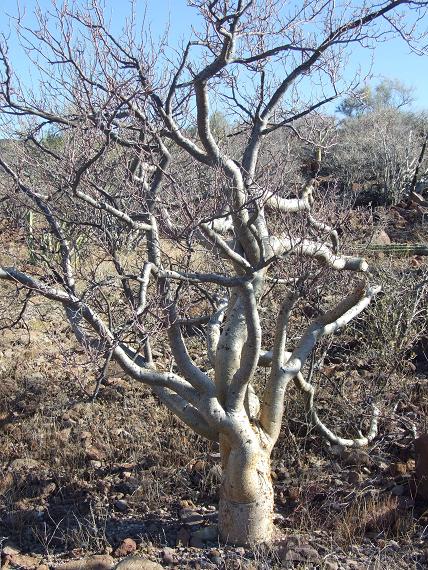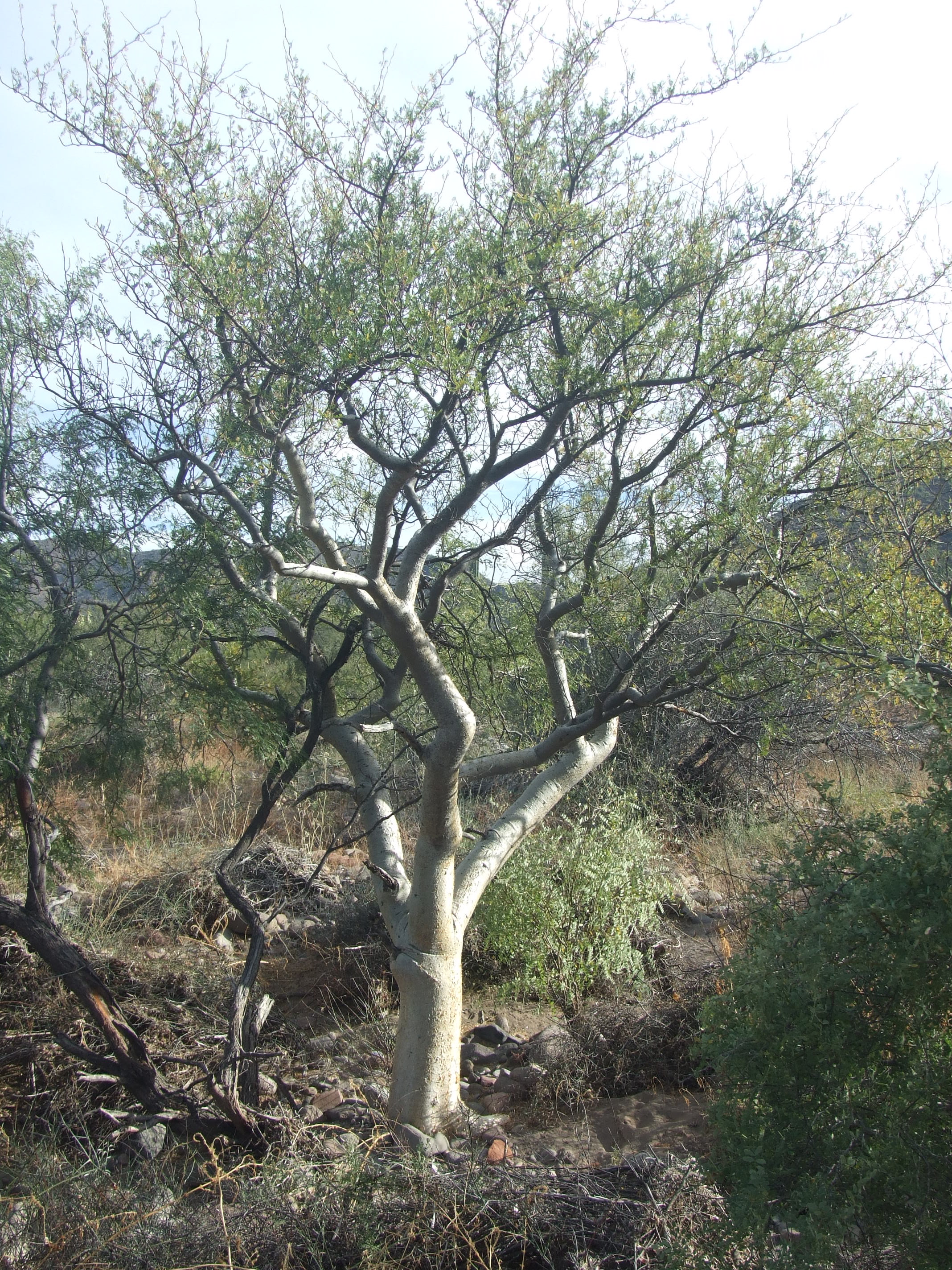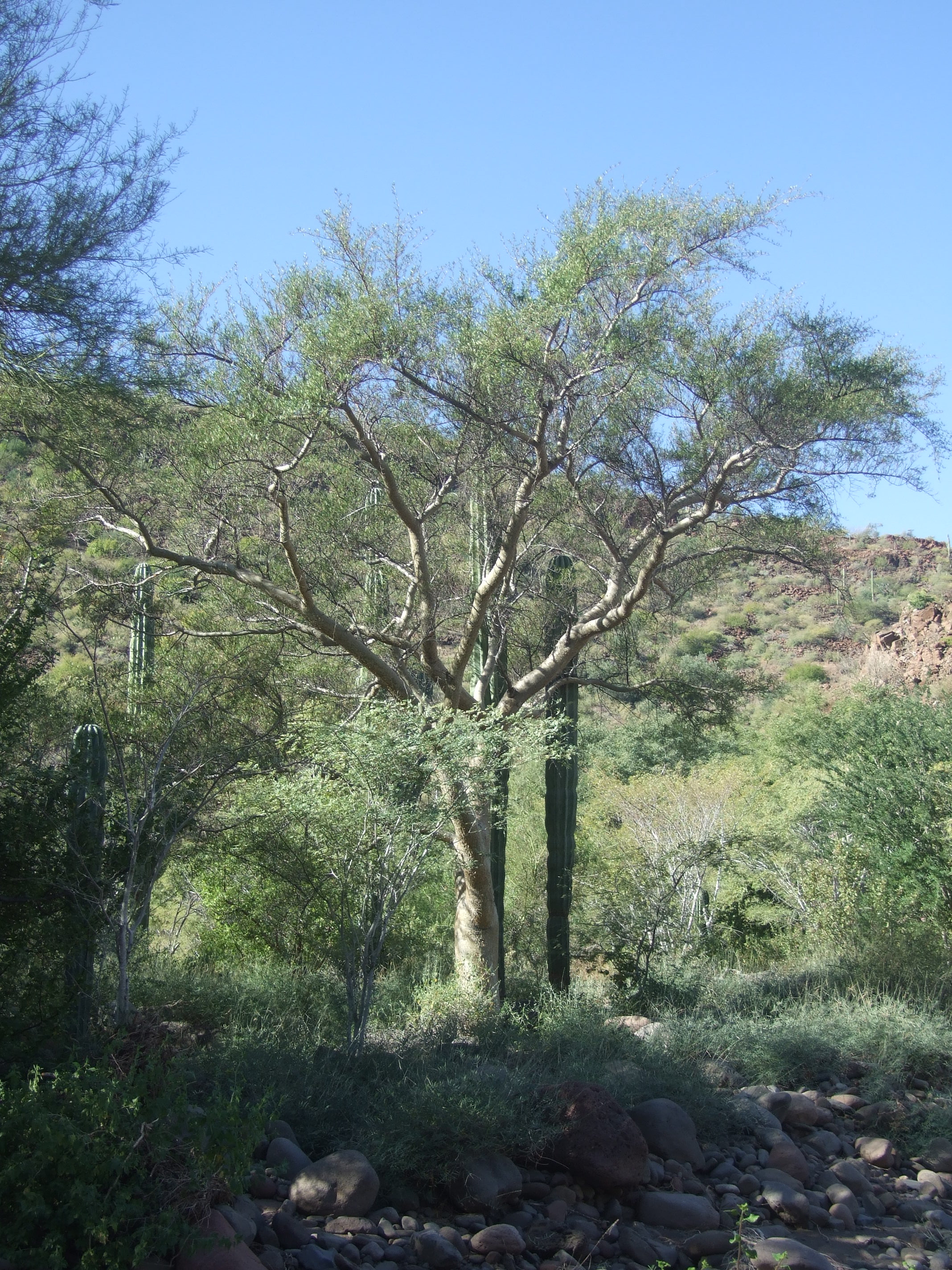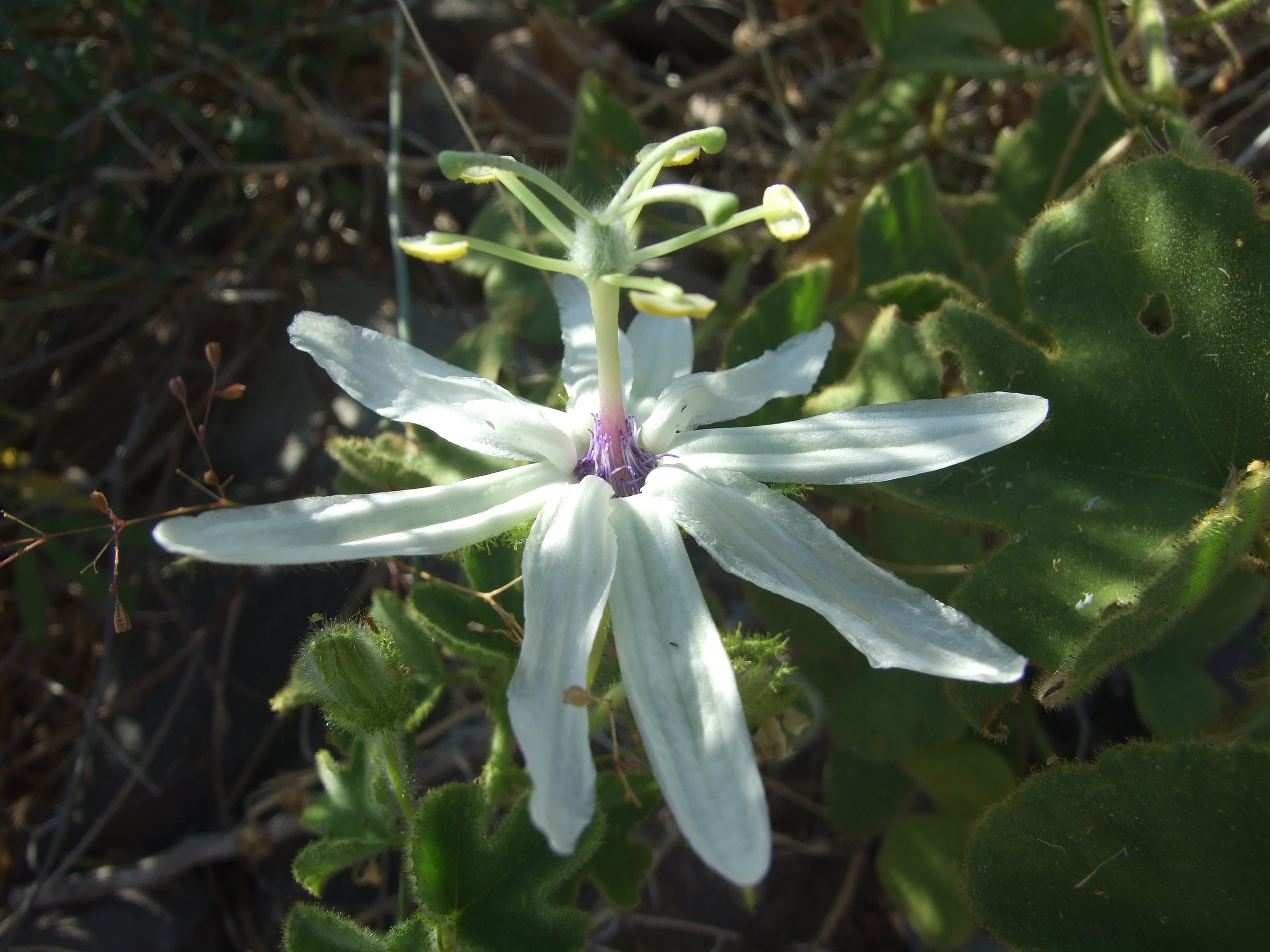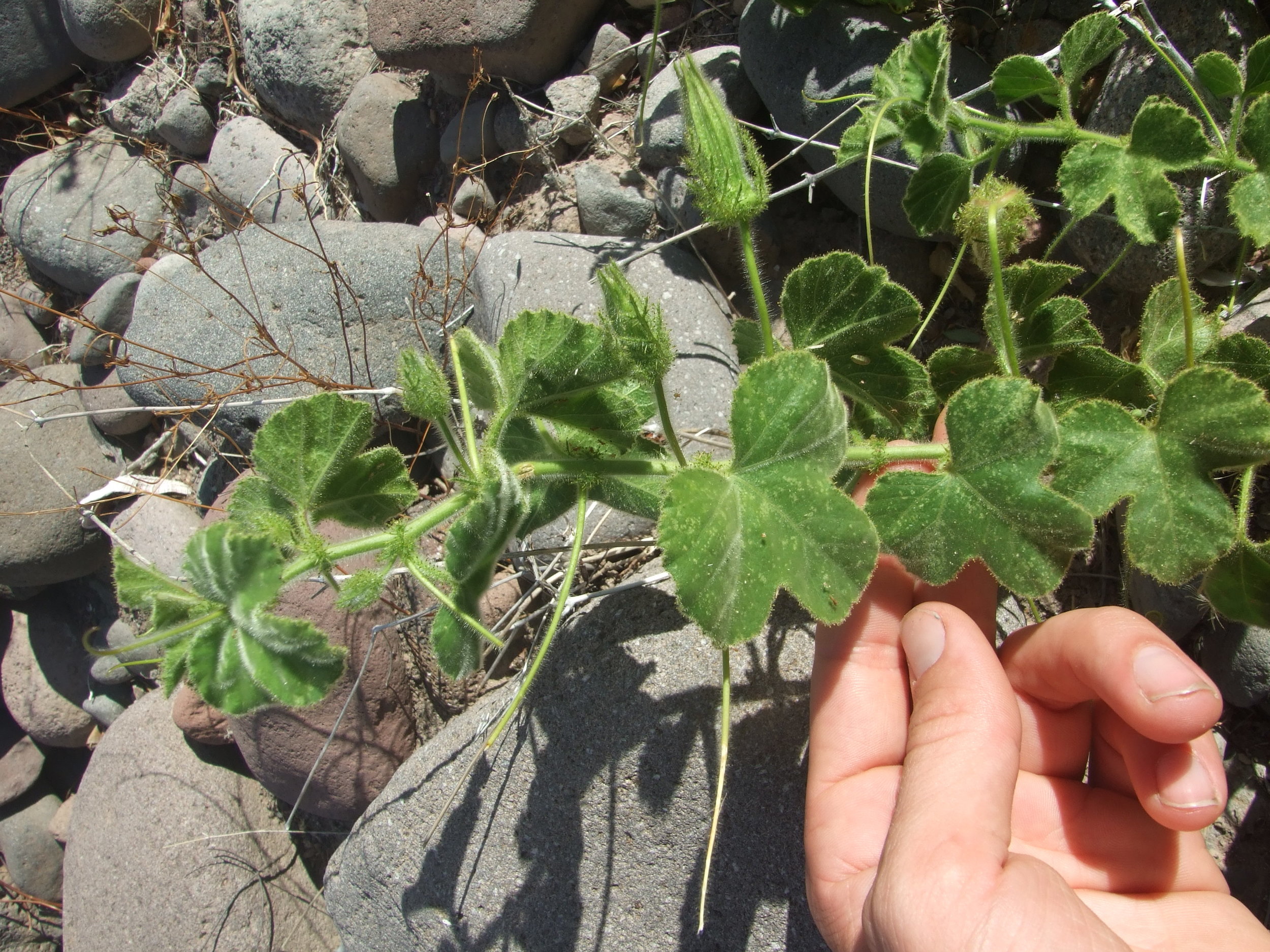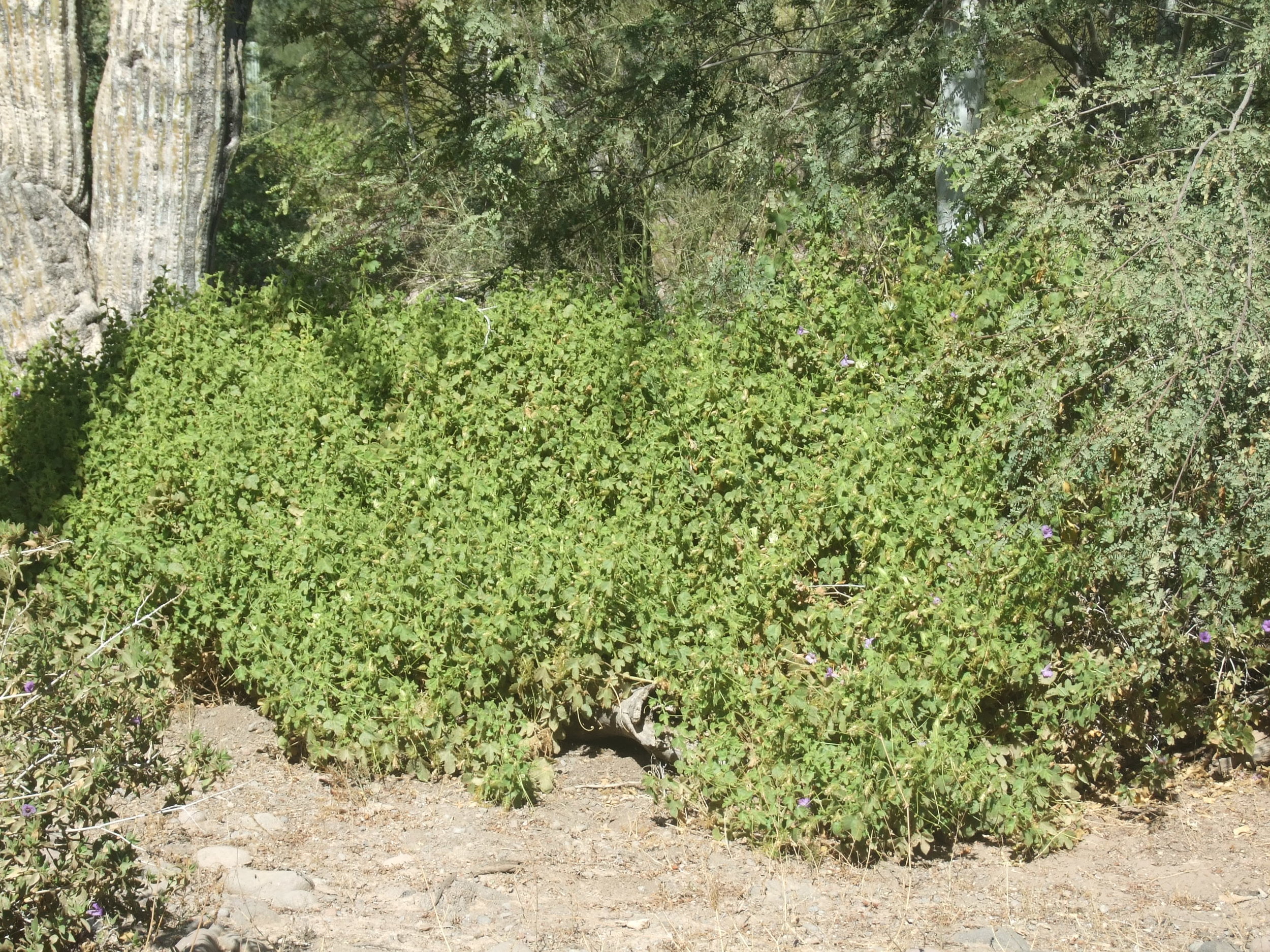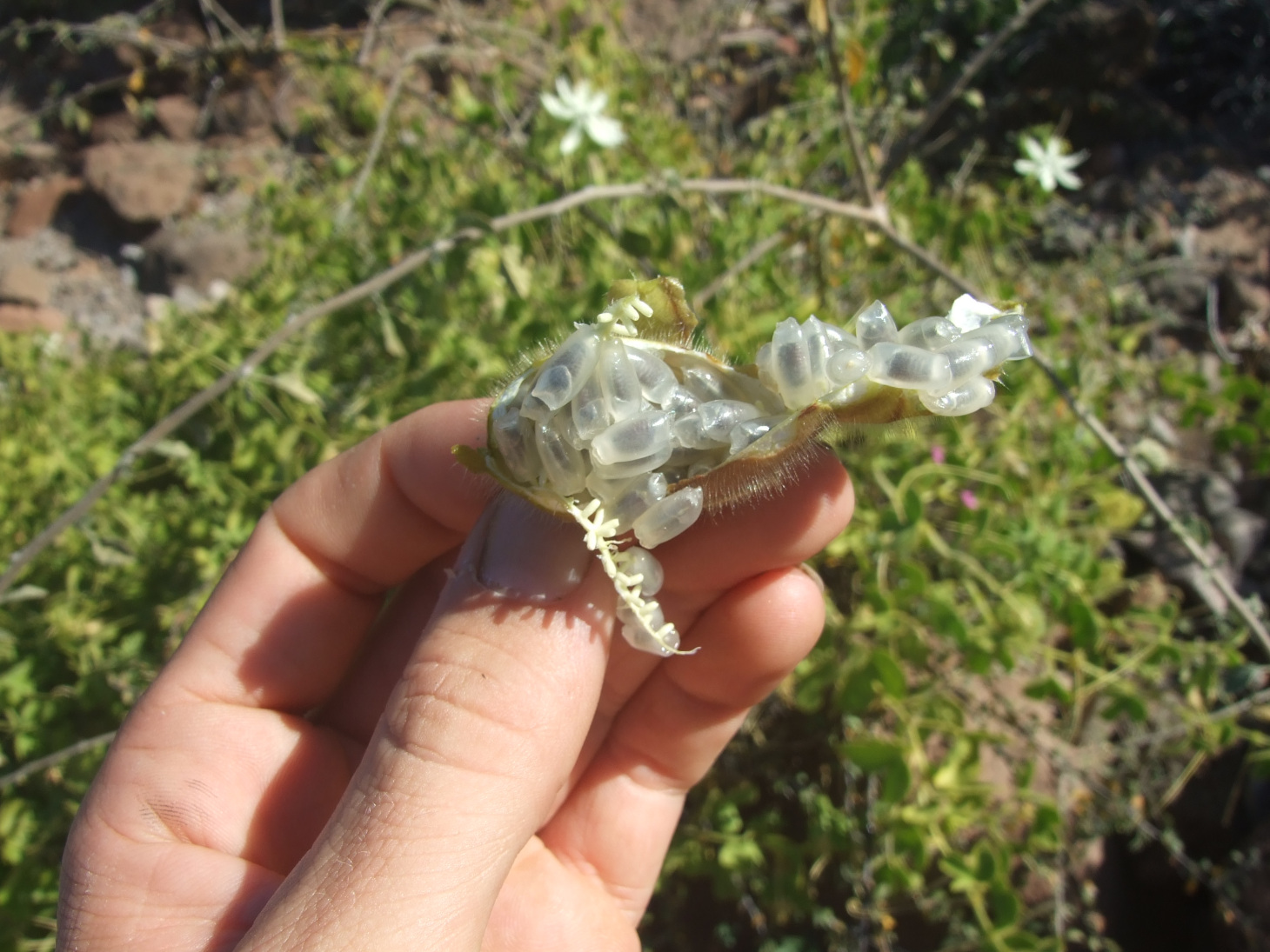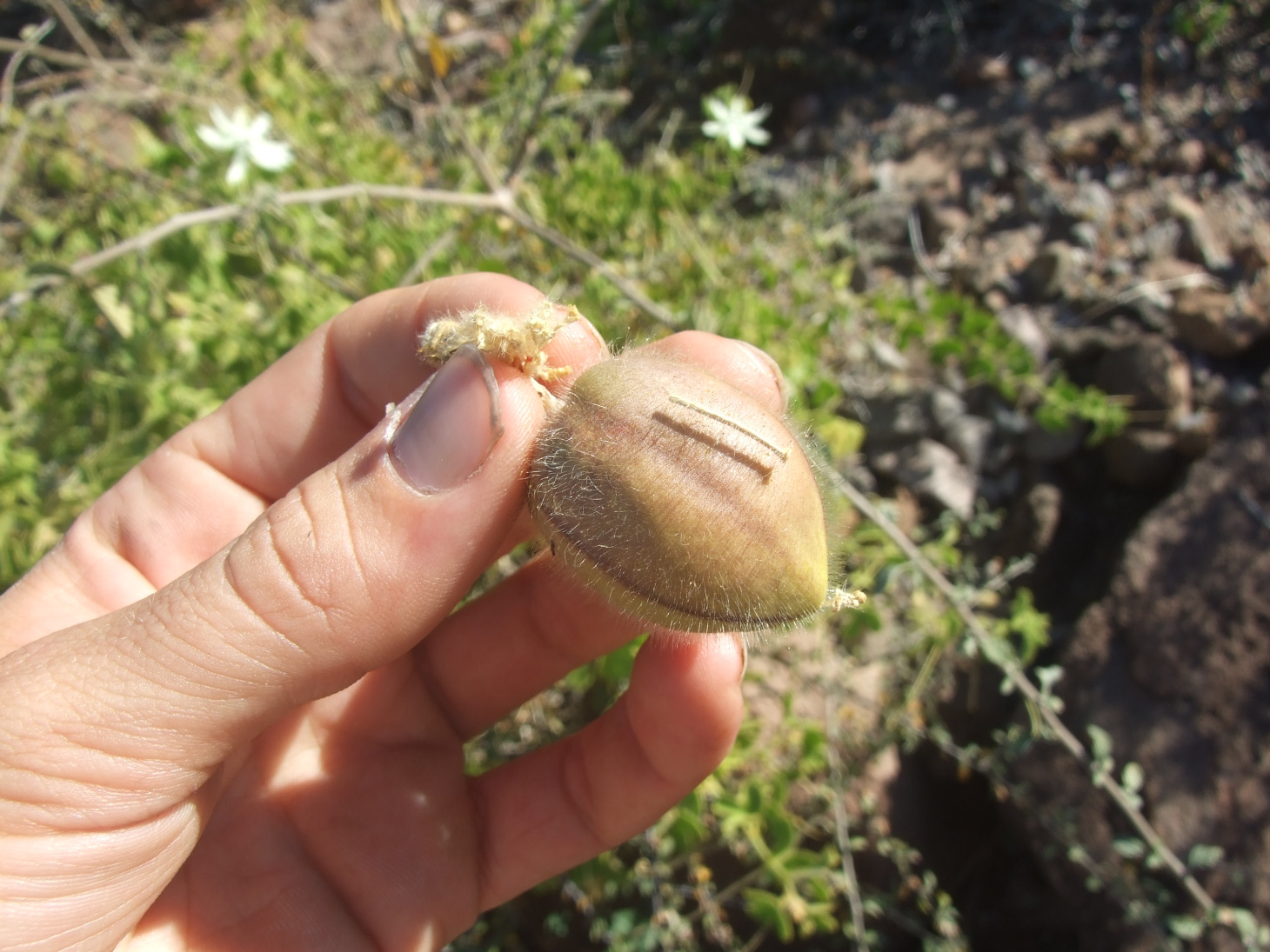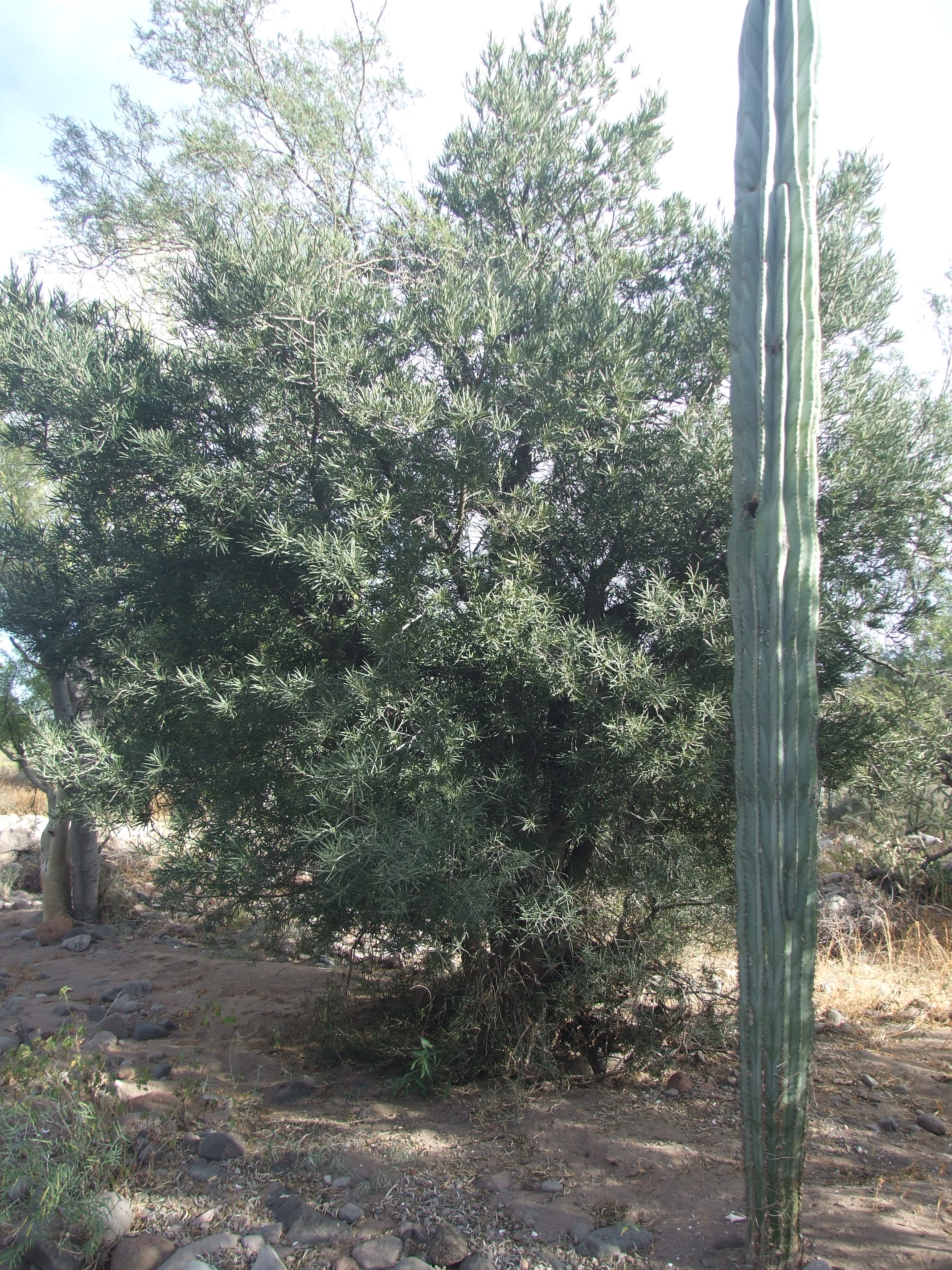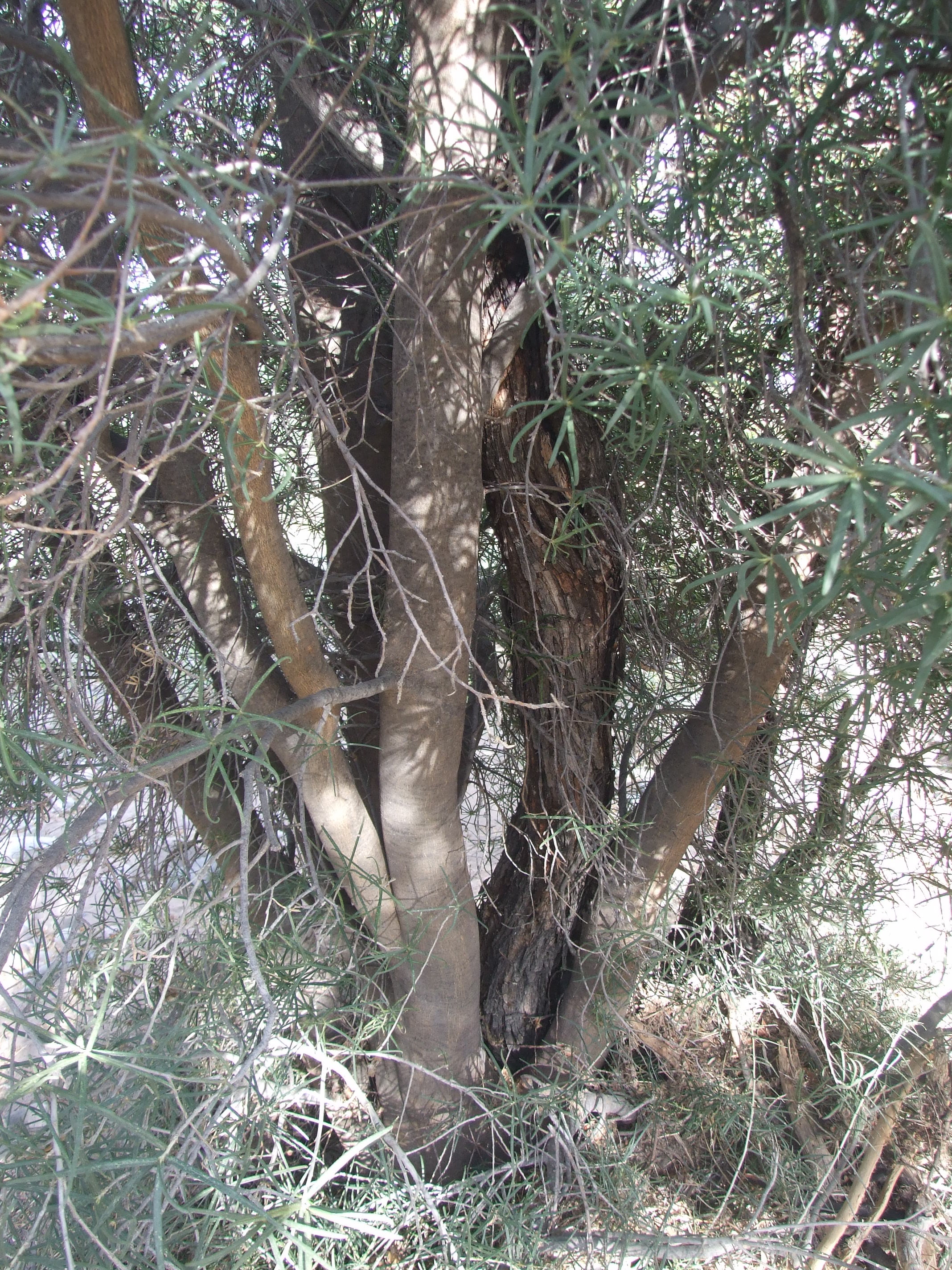This is a somewhat unique, tree-like shrub, with a short trunk and numerous branches growing upright. When in bloom this species has a spectacular reddish-pink bloom, very bright and in stark contrast to the desertscape. Reportedly the bark is stripped and cooked and used to wash cuts.
Palo Adan, leafing out
Palo Adan, leaf
Palo Adan
Palo Adan, bark detail





